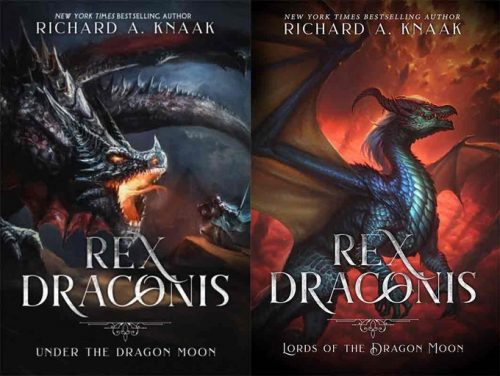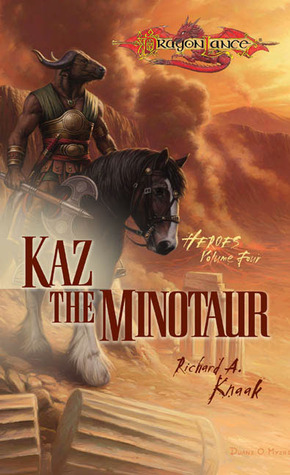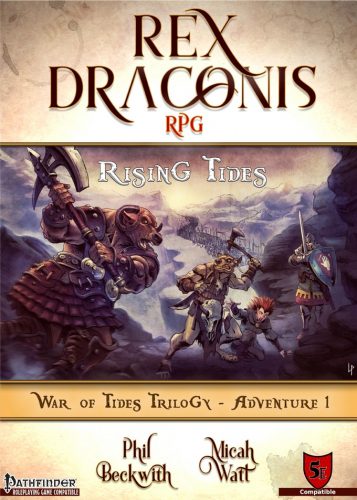I’ve written about Richard A. Knaak a couple of years ago when his Rex Draconis novels had a RPG Kickstarter running. In it, I talked about Knaak being one of those authors whose work really pulled me in and fleshed out worlds I’d either already invested in (Dragonlance) or he invented (The Dragonrealm series). Well, he has a new Kickstarter going on right now to help fund his newest work/world: Rogues Gallery.
I read in an interview with you that you initially broke into writing by driving up to TSR and just asking to speak to an editor. Which kind of blew my mind. That seems like a very big step to take. What made you think that approach might work for you?
I was young, naive, and very stubborn. It was only around an hour and a half away, but I thought I’d give it a try. Wouldn’t work these days, but I caught them at just the right moment. In a sense, though, it goes with what I often say. You usually have to make your own breaks.
Before that trip, had you been pursuing more of a traditional path prior to that? Submitting to agents and editors and crossing your fingers?
Yes, although mostly I submitted to publishers on my own since it’s often hard to get a GOOD agent without a sale. I’d almost sold a book on my own but could not get the ending to the satisfaction of the editor. Sadly, that novel was lost later. with both the paper copies and disks accidentally thrown out during a move.
What’s a typical writing day for you? Do you strive for a certain number of words or hours? Do you have any habits or techniques that allow you to juggle the various projects your working on?
I tend to have multiple writing sessions, most often in the afternoon and evening. I don’t have a set amount of words, but I seem fairly consistent. No real techniques, although a temporary change of scenery between writing sessions is helpful.
How do you manage your daily/family life with your creative work?
Writing is my life.
What’s your process look like when you’re writing? Do you go with the full outline or are you a fly by the seat of your pants type?
I’ll take notes and I likely have a very rough outlines, but nothing is written in stone. I’ll try to write a short paragraph or two about a chapter unless I’ve gotten to the point where I know what must happen. I generally know the basic climax. There is some flying by the seat of my pants, too.
Are there subjects or themes you find yourself coming back to again and again in your writing?
Redemption is a big one. Many of my characters have something in their background that confronts them in the present. It can be a really big problem, too. Also, characters who don’t start out to be a hero, but just do what must be done regardless of the consequences to themselves.

You’ve just launched a new Kickstarter for your next series. What is Rogues Gallery about?
Rogues Gallery concerns an alternate Chicago around 1930, where the sort of costumed adventurers and villains of the pulp era abound. However, the city’s protector, the Legionary, is missing. When it becomes clear that he is not likely returning soon, chaos overwhelms Chicago as various villains act. The police try their best but are failing. However, as the turmoil grows, conflict arises among the various rogues as their differing reasons for becoming who they are come into play. In fact, those reasons may be the only hope that the city has as the thus-far fruitless search for the Legionary continues.
We’ll also explore some of those reasons behind the rogues emerging in general, such as the aftermath of the Great War.
It seems that Rogues Gallery allows you to write in a genre that you haven’t dealt with much with your other novels (other than the Black City Saint series). What about the idea of that pulp era made you want to write this novel?
Well, in addition to having grown up in the Chicago area where Prohibition was something I heard about a lot, I’m a big fan of the Shadow, among other pulp characters.

Have you found it Is easier or harder to write a book that is somewhat set in the real world?
Well, there’s more research, but I enjoy it because it helps make the story feel more real while still giving you an adventure.
What is the plan with Rogues Gallery? Is this a standalone book, or do you have plans to release sequels down the road? How much do you already have mapped out?
This is designed to stand on its own, but I have ideas beyond it and, if the Kickstarter goes well, one of the stretch goals would likely lead toward a sequel. I know where I would go with the story if that happens.
You’re obviously a very successful writer, with many novels to your name over the years, so why go the Kickstarter route? Is there something specific about it that caused you to go this way?
This is a novel that is a little harder for publishers to pin down, as I learned even from Black City Saint. It also allows me to schedule it in a different way so that I can get it done as it needs to be. I will be doing the audiobook in concert with Hydra Publications, so, one aspect will be more traditional.

Your world of Rex Draconis was featured in a Kickstarter last year allowing backers to play in the world you’d devised. Is there any chance of being able to play an RPG set in the Rogues Gallery world?
Actually, the novels were a combination of an independent support setup and later publication through Hydra. The RPG material went through a very successful Kickstarter. I’ve actually had someone ask me about doing something with Rogues Gallery, so, yes, there may be some RPG alongside it. We’ll see.
Where can someone find out more about you?
I have a website, but I haven’t had the patience for it due to personal matters. I’ll get it up and running again soon. The best place to find me is on Facebook on my pro page at: https://www.facebook.com/richardallenknaak
***
I want to thank Richard for taking the time to talk to me and answer my questions. Make sure to check out Rogues Gallery on Kickstarter!
***
John McGuire is writer of the sci-fi novel: The Echo Effect.
He is also the creator/author of the steampunk comic The Gilded Age. If you would like to purchase a copy, go here!
Click here to join John’s mailing list and receive preview chapters of upcoming novels, behind the scenes looks at new comics, and free short stories.
His other prose appears in The Dark That Follows, Hollow Empire, Beyond the Gate, and Machina Obscurum – A Collection of Small Shadows.
He can also be found at www.johnrmcguire.com
















